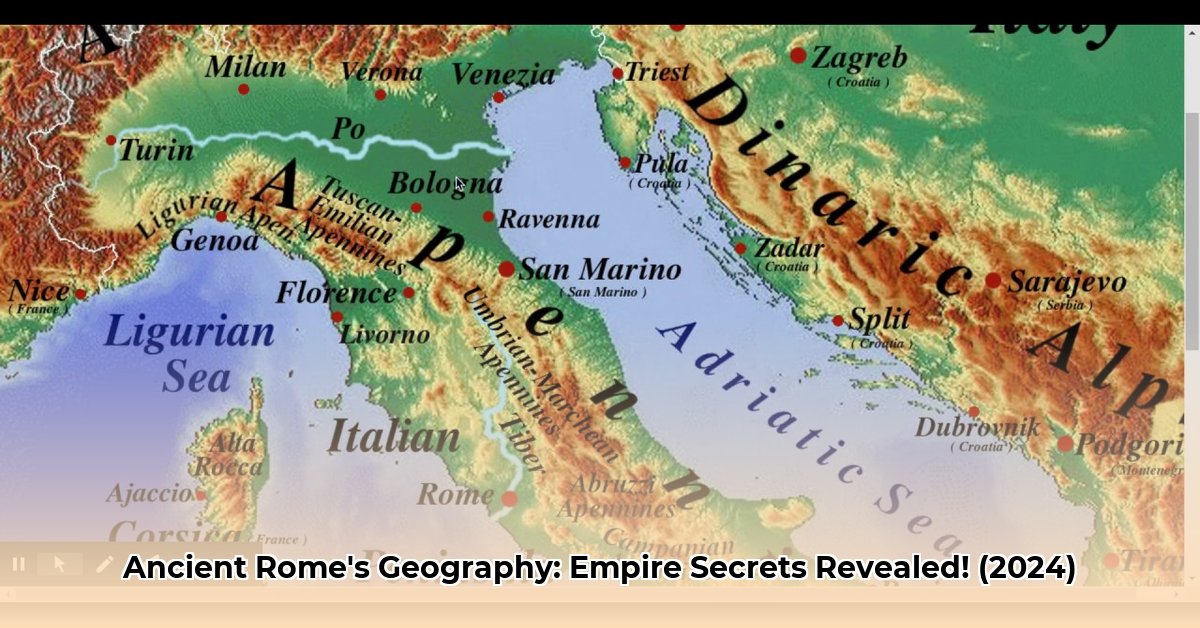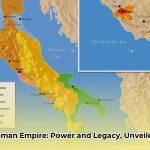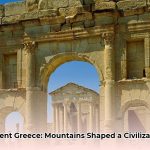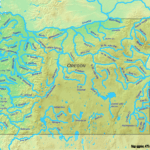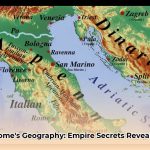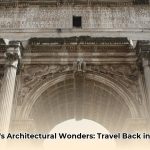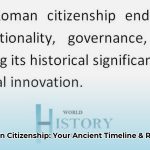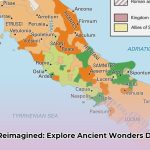Ever pondered the profound secret behind Rome’s unparalleled rise from a modest settlement to a colossal empire that shaped Western civilization? While exceptional military prowess and astute political leadership undeniably played their part, the often-overlooked, yet fundamentally crucial, factor was its strategic geography. Rome wasn’t merely built on legend; it was intricately woven into a landscape that offered innate advantages, propelling its ascent and defining its enduring impact. This article delves into how Rome’s unique environment – from its winding river to its protective mountains – was the silent architect of its dominance, exploring the foundational features that enabled its growth, the ingenious ways Romans adapted their surroundings, and the subtle geographical strains that contributed to its eventual complexities. You can read more about the Roman Empire’s geography here.
The Canvas of Power: Rome’s Geographical Foundations
Long before the legions marched or emperors reigned, the very land of the Italian Peninsula provided the fertile ground for Rome’s destiny. Its central location in the Mediterranean, coupled with specific local features, offered a unique blend of protection, resources, and connectivity.
The Tiber River: Rome’s Pulsating Artery
The Tiber River was more than just a waterway; it was the lifeblood of ancient Rome, a vital artery sustaining a burgeoning civilization. Originating in the Apennine Mountains, this 405-kilometer river flowed directly into the Tyrrhenian Sea, with Rome strategically nestled on its eastern bank. For early Roman communities, the Tiber delivered an indispensable source of freshwater, supporting a rapidly growing population and allowing for crucial agricultural irrigation in its rich valley. It also served as an efficient natural highway, facilitating brisk internal commerce and providing a secure, navigable route to the sea for trade, while simultaneously offering a natural defensive barrier against immediate threats approaching from the west. This singular access to both inland resources and maritime routes was foundational to early Roman development and prosperity.
The Seven Hills: A Natural Citadel
Rome was undeniably built on a collection of seven distinct hills: the Palatine, Capitoline, Aventine, Caelian, Esquiline, Quirinal, and Viminal. These elevated positions were far more than mere topographical features; they functioned as formidable natural fortresses. Settling atop these easily defensible heights granted the early Romans a significant tactical advantage, offering robust protection against invaders and fostering organized urban growth within secure boundaries. The hills also provided a natural separation and organizational structure for early settlements, which gradually coalesced into the unified city, enhancing its resilience and allowing its population to thrive in relative safety.
The Mediterranean Sea: The Highway to Empire
Proximity to the vast Mediterranean Sea proved to be a monumental advantage for the developing Roman civilization. This prime coastal access, facilitated by the Tiber, unlocked extensive routes for trade, cultural exchange, and ambitious expansion across the entire ancient world. Rome was not isolated; it became a central hub for vibrant maritime activity, connecting it to the rich civilizations of Greece, the fertile lands of North Africa, and the burgeoning markets of Spain and Gaul. This crucial nautical access directly fueled economic expansion, enabling Rome to extend its influence far beyond its Italian territories and positioning it to become the preeminent naval and commercial power of its era. The Mediterranean effectively acted as a dynamic highway to immense wealth and unparalleled political power.
Mountain Barriers: Nature’s Shield
The formidable Alps to the north and the Apennine Mountains, which bisected the Italian Peninsula, served as potent natural protectors for Rome. While not entirely impenetrable, these imposing mountain ranges made it significantly harder for any would-be conqueror to launch large-scale invasions, effectively funnelling approaching armies into predictable, defensible passages. These natural geographical defenses provided Rome with invaluable time to systematically build up its military strength, consolidate its resources, and strategically plan its expansion. The mountains functioned as a crucial buffer, allowing the burgeoning Roman state to mature and strategically prepare for its future dominion.
A Benevolent Climate and Fertile Lands
The Italian Peninsula enjoys a Mediterranean climate, characterized by warm, dry summers and mild, wet winters. This climate was ideally suited for agriculture, enabling the cultivation of staple crops like wheat, along with vineyards for wine and olive groves for oil – the cornerstones of the Roman diet and economy. Furthermore, the region’s unique volcanic geology provided not only durable building materials but also periodically deposited ash and tephra, enriching the soil and promoting bountiful harvests. This natural agricultural abundance was a critical factor in sustaining Rome’s rapidly increasing population and fueling its economic growth.
Engineering the Environment: Rome’s Infrastructural Mastery
The Romans understood that their geographical advantages, while significant, could be amplified and even overcome through ingenious engineering. Their infrastructure projects were not mere feats of construction; they were strategic responses to the challenges and opportunities presented by their environment, forging a unified and functional empire.
1. The Great Roads: Veins of the Empire
The unparalleled Roman road network, famously spanning nearly 400,000 kilometers across the empire, was far more than mere pavement; it constituted the very backbone of Roman power. Masterfully engineered with meticulously layered construction – featuring robust foundations of sand and stone, durable gravel, and lime mortar – these roads consistently lasted for centuries. Iconic routes like the Via Appia (Appian Way), connecting Rome to Brindisi, exemplify this engineering marvel. This extensive network enabled the swift transit of vital goods, legions of troops, and critical information across immense distances, actively nurturing widespread trade, firm administrative control, and cultural diffusion across diverse provinces. It was, in essence, the sophisticated communication and supply chain system of its time, fundamentally connecting every corner of the empire.
2. Aqueducts: Conquering the Water Challenge
Roman aqueducts represented the pinnacle of ancient hydraulic engineering. They ingeniously utilized principles of gravity and precise gradient to efficiently channel fresh, clean water from distant natural springs and rivers directly to densely populated urban centers, thereby guaranteeing a consistent and reliable water supply for millions. The Aqua Appia, Rome’s first major aqueduct dating back to 312 BCE, was a groundbreaking innovation, followed by monumental structures like the Aqua Claudia and Aqua Anio Novus. These aqueducts did much more than merely supply opulent public baths and decorative fountains; they fundamentally fostered improved public hygiene, sanitation, and supported the burgeoning urban population, allowing for unprecedented city growth.
3. Sanitation: A Foundation for Public Health
The Cloaca Maxima, Rome’s ancient main sewage system, stands as a pioneering and remarkably sophisticated example of Rome’s profound commitment to exemplary urban sanitation and public well-being. What began as a practical marshland drainage canal in the 6th century BCE gradually evolved into an advanced, comprehensive waste removal system unparalleled in the ancient world. This ingenious infrastructure significantly reduced the prevalence of disease, managed waste efficiently, and meticulously maintained a clean, healthy urban environment, serving as a direct precursor to modern municipal systems globally. It underscored the Roman understanding that public health was integral to societal stability and productivity.
4. Public Spaces: Forging Civic Identity
Iconic public buildings, such as the grand Colosseum, the sprawling Roman Forum, and numerous impressive public bathhouses, served multifaceted social functions, including spectacular entertainment, crucial political discourse, ceremonial functions, and essential public leisure. The Colosseum, capable of seating 50,000 spectators, hosted colossal mass gatherings and gladiatorial contests, while the Forum served as a dynamic hub for political debate, public speeches, law courts, and crucial civic life. These extensive public amenities decisively boosted vital social interaction and fostered a strong, unified communal identity among Roman citizens, contributing profoundly to societal cohesion and the shared experience of empire.
5. Housing: A Reflection of Society
Housing in ancient Rome distinctively reflected the pronounced social and economic hierarchies of the time. Patrician mansions, known as domus (private residences for the wealthy), embodied architectural grandeur, lavish comfort, and often featured intricate interior courtyards. In stark contrast, plebeian residences, called insulae (multi-story apartment blocks), often housed the vast masses in compact, less luxurious apartments, sometimes prone to collapse or fire. The strategic urban planning, influenced by geography, meant that even with dense populations, the city aimed to provide some level of order. This stark difference in housing solutions highlights the systemic disparities inherent in ancient Roman society, a challenge that continues to be addressed in modern urban planning through initiatives aimed at equitable housing options and mixed-income communities.
Ultimately, Rome’s true genius lay not merely in single, isolated innovations, but profoundly in how all their sophisticated systems seamlessly worked together in concert. The logical grid-based city layouts, highly efficient roads, ubiquitous fresh water supply, advanced sanitation, and vibrant public spaces all collectively contributed to Rome’s unparalleled success and longevity. By meticulously studying these remarkably integrated components, modern urban planners can gain invaluable insight into creating sustainable, remarkably resilient, and truly vibrant cities for the future.
The Paradox of Power: Geography’s Role in Decline
While geography was undeniably a cornerstone of Rome’s ascendancy, the very factors that contributed to its initial strength also became sources of profound strain in its later centuries. The narrative of Rome’s decline is multifaceted, but the evolving relationship with its vast geographical domain presented unique and complex challenges.
Imperial Overextension and Resource Strain
As the Roman Empire grew exponentially, its resources became increasingly strained and thinly spread across immense distances. Maintaining control over provinces stretching from Britannia to Mesopotamia, and from North Africa to the Rhine, demanded constant, costly military presence and administrative oversight. The sheer geographical reach, while initially a source of power, became a logistical nightmare. Transporting goods, troops, and tribute across such vast and varied terrains drained the treasury and stretched communication lines thin. It became increasingly difficult to effectively maintain distant frontiers and efficiently manage the immense territories that had been painstaking conquered, leading to vulnerabilities that opportunistic invaders exploited.
Environmental Degradation: A Hidden Cost
Centuries of intensive Roman activity left a significant environmental footprint. Ancient Roman agricultural practices, though initially highly successful and productive, eventually led to widespread soil depletion, erosion, and reduced fertility in many key farming areas, particularly in Italy and North Africa. Extensive deforestation, primarily driven by the insatiable demand for timber for construction, ship-building, and fuel for Rome’s growing cities, industries, and military, demonstrably altered local climates and landscapes across the empire. These cumulative environmental effects, perhaps subtle and imperceptible to Romans at the time, undeniably contributed to long-term resource scarcity and instability within the Roman territories, adding another layer to their complex decline. The reliance on distant provinces for vital resources, exacerbated by environmental strain at home, created a highly complex and vulnerable supply chain.
Shifting Geopolitical Dynamics
The very natural barriers that once protected Rome eventually became borders to defend against increasingly organized and numerous barbarian tribes. The Alps and the Rhine-Danube frontier, while formidable, required immense manpower and resources to patrol and fortify against persistent incursions. As climate shifts and population pressures pushed these groups outward, the geographical buffers became lines of conflict, diverting critical Roman resources from internal development and economic stability towards constant military expenditure. The “Pax Romana” (Roman Peace), once facilitated by secure borders, eventually crumbled under the relentless pressure along these vast geographical boundaries.
Rethinking the Narrative: A Balanced Perspective
It is crucial to avoid oversimplification when discussing Rome’s fall. Attributing Rome’s decline solely to geographical factors would be a significant historical mistake. Political instability, severe economic woes, pervasive social unrest, devastating plagues, and frequent barbarian invasions all played profoundly significant and interconnected roles. However, understanding how Rome’s relationship with its environment evolved—transforming from an initial source of immense strength to a profound source of strain—offers truly invaluable insights into the multifaceted challenges faced by this ancient superpower.
In essence, Rome’s geographical story serves as a profound cautionary tale for all civilizations. Initial immense advantages can inadvertently breed a dangerous sense of complacency, and unchecked, aggressive expansion can invariably lead to unforeseen vulnerabilities. In the long run, even the most innovative and technologically advanced society must grapple with the enduring environmental consequences of its actions and strive for sustainable practices. The profound and lasting legacy of Roman urban planning and its symbiotic relationship with its environment continue to provide critical lessons for thoughtfully building better, more resilient, and truly livable cities today.
